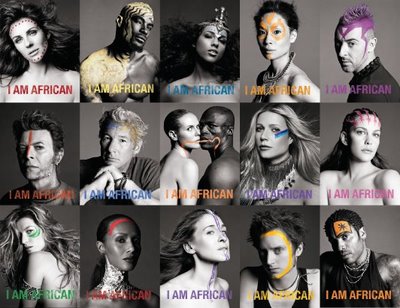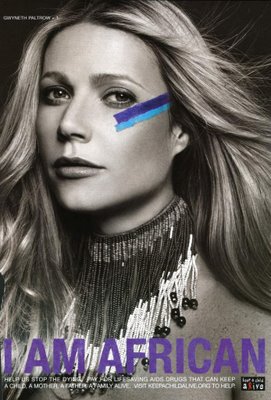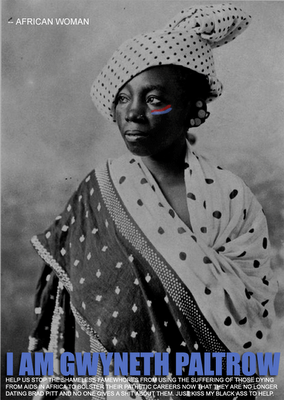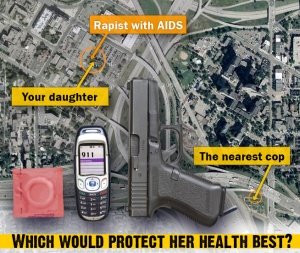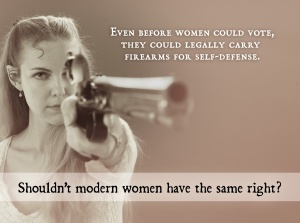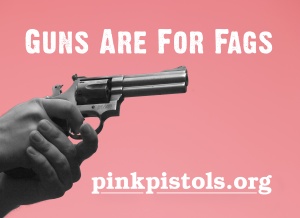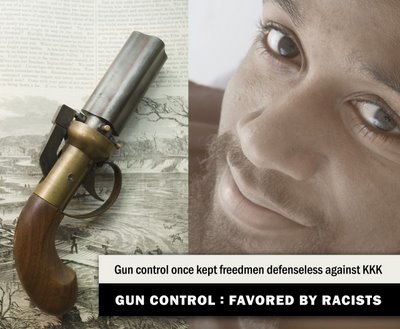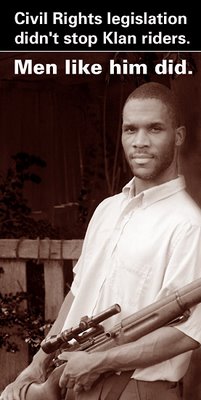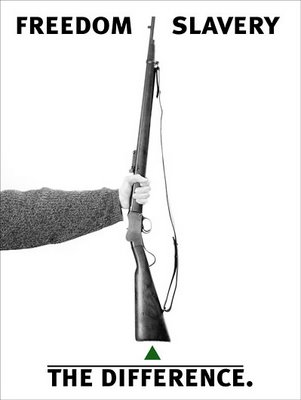activism/social movements
This British calendar, found here, consists of photos of beefy men doing housework. And I thought I Love It When You Talk Clean to Me was just a joke.
Also note that it’s another example of social activism through consumption–the company makes a donation to breast cancer research for every calendar sold.
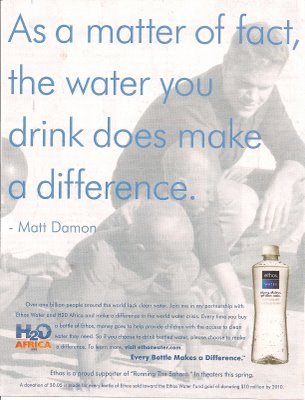 Here we have buying bottled water–a product criticized for its environmental impacts–portrayed as a form of humanitarianism. Also, in smaller text the ad sneaks in a plug for a movie: “Ethos is a proud supporter of ‘Running the Sahara.’ In theaters this spring.” I presume Matt Damon stars in it. Why can’t celebrities just donate their own money instead of trying to get us to buy something expensive just so a tiny bit of it goes to a charity?
Here we have buying bottled water–a product criticized for its environmental impacts–portrayed as a form of humanitarianism. Also, in smaller text the ad sneaks in a plug for a movie: “Ethos is a proud supporter of ‘Running the Sahara.’ In theaters this spring.” I presume Matt Damon stars in it. Why can’t celebrities just donate their own money instead of trying to get us to buy something expensive just so a tiny bit of it goes to a charity?
And in the tiniest print down at the bottom you learn that 5 cents from every purchase is donated to the Ethos Water Fund. The Impulsive Buy says Ethos costs $1.85 a bottle (I found that price listed elsewhere as well). Also, Ethos is owned by Starbucks.
You might want to pair this image with this, this, and this.
I saw this energy drink this morning at a gas station. Notice that it’s sugar-free. According to the website, a portion of proceeds goes to fight breast cancer, though it’s unclear if they mean a portion of the profits of the drink, or just things bought at the online store. Another example of the idea of doing good through consumption, not by just donating money directly to an organization addressing an issue you care about (for other examples see here, here and here). Also, the website says Go Girl is not a rehydration drink (such as Gatorade), but a “functional beverage,” whatever that is.
How do we feel about this campaign, by Keep A Child Alive, to encourage people to donate money to Africa on the basis that we are all African? (Apparently we only care about ourselves, so if we suggest that Africa is ourselves, then we’ll donate?)
Do Americans, many of whom are white people with privilege based in race, class, and nation, get to claim Africa as theirs? Do white people now get to have blackness too? Is this insulting? Some people think so. Here is a larger version of the poster with Gwyneth Paltrow (scroll down for a response):
I borrowed this image from Blackademic.
NEW! Julie C. noticed that the Canadian Centre for Diversity put out a similar campaign. There’s something very interesting about it, but I’m having a hard time putting it into words. Click here to watch the short commercial. What do y’all think of it?
These anti-statutory rape PSAs were made by advertising agency Serve for the United Way of Milwaukee. They created enough of a controversy that they were pulled (see an article at Salon).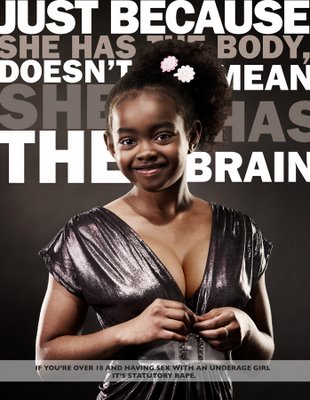
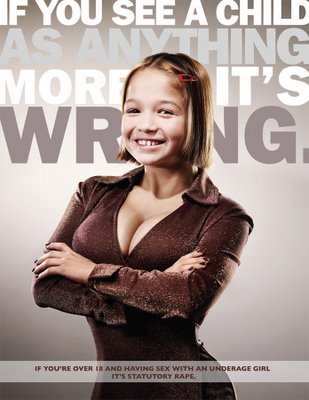
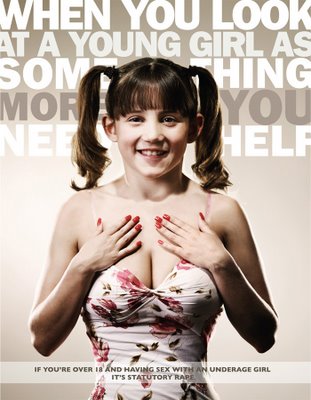
In response to the controversy, the advertising agency put a little over 2 minutes of focus group footage on youtube:[youtube]http://www.youtube.com/watch?v=61-gu2X_57k[/youtube]
As if the world needed another battleground, peaceful Kenya slipped into a civil war as post-election demonstrations turned to riots, and riots to rampages. Kenya’s December 27th elections could have ended as a model for party transition, but instead it became the worst possible scenario.
EU observers agreed the vote processes were flawed and results were denounced as rigged by the main opposition party. Protesters were shot by police leading to rioting and repeated demonstrations. Hundreds of thousands of Kenyans fled their homes and hundreds lie dead as the conflict became an ethnically charged civil war.
Two years ago I had the good fortune of spending four days in Kenya. To my amazement Nairobi’ downtown felt like a Midwestern city: orderly, friendly, uncongested, clean, and mostly absent of beggars. But Nairobi has over three million people, a half million of which live in Africa’s largest slum.
Poverty in many rural villages was evident, but the Kenyan people, especially the women, work very hard. In the first photo is a typical rural scene where the women do back breaking work in the fields.
During our brief stay the papers headlined several major political events: President Kibaki, who is still the uncompromising president, fired his entire cabinet. The next day he suspended all of parliament. On the third day, major public demonstrations took place in the streets by the opposition party calling for new presidential elections.
I watched these demonstrations on the streets of Nairobi and felt the tension and anger. The demonstrations, however, ended without incident. But apparently it has not been uncommon for people to die in Nairobi demonstrations.
I took the 2nd photograph of the demonstrations in the central city. Notice that it could pass for football game day in a small US city.
What can sociology add to help us understand Kenya’s tragic, unfolding story? Here are three perspectives that may help:
Social Class Perspective: The images we are given by the American network media are suggestive of warring savages. In fact, the riots and ethnic strife are phenomena of the poverty class, not the wealthy and middle classes, although the leaders of both warring factions are wealthy politicians. Sharp inequality and festering poverty lay beneath the surface of this formerly peaceful country.
Historical Conflict Perspective: The British spent decades trying to keep the Luo and Kikuyu divided to preserve colonial order. (Now these are the two major warring ethnic groups.) During the decolonization process the British drew electoral boundaries to cut the representation of groups they thought might cause trouble. This only fanned the flames of tension among these groups. In the past few years tribal factions fighting over cattle rights in the Rift Valley have left over 100,000 refugees. These conditions helped ignite recent spontaneous rioting, looting and killing.
Race/Ethnicity Perspective: Both sides of the conflict are accusing the other of genocide, and both may be right. It will take months if not years to assess the horrendous damage. Ethnic hatreds run deep and prolonged, but the first cause of this war was political. It was the common practice of rigging elections followed by a refusal of the President to negotiate a coalition government.
What other sociological perspectives help to explain what is happening in Kenya and what might happen in the future?
Here is a link to a website sponsored by Tampax and Always about their work with the UN to give pads to girls in Africa, supposedly because these girls miss school each month because they don’t have pads to wear.
Here is a t-shirt you can buy to support the program. It says “Use your period for good”:
 The t-shirt costs $21.99. Of this, $1 goes toward the program.
The t-shirt costs $21.99. Of this, $1 goes toward the program.
This brings up all kinds of issues–for instance, where does the other $20.99 go? To Tampax and Always? What do these companies stand to gain from this? Positive publicity or lifelong customer loyalty in Africa?
It could also be used as part of a discussion about consumption and activism–the idea we have now that you can just buy something if you want to fix a social problem. If you pick up any fashion magazine, there will be a page or an article in it telling readers they can change the world by buying some product–nevermind that only a tiny part of the purchase price goes to the charity.
For other examples of shopping as activism, look here, here, and here.
Anti-gun control propaganda (found here) aimed at EVERYBODY.
What you might expect from the pro-gun lobby:


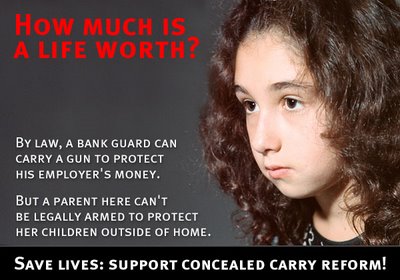
For kids!
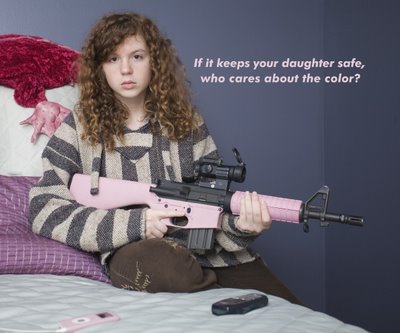

Pro-gun feminism?
Guns are for fags:

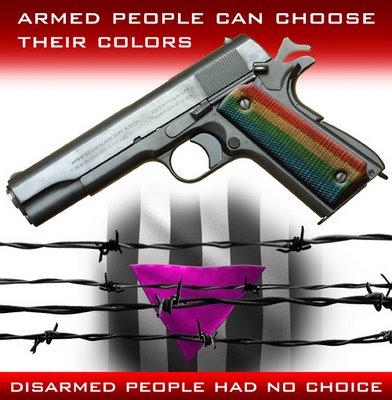

Gun control is racist:
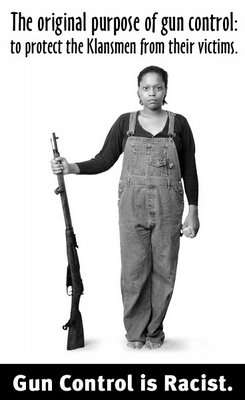
Bill F. sent in this one. What’s interesting about this image is the comment on masculinity–the implication is that “pacifist” men (whatever “pacifist” is taken to mean) aren’t “real” men because they can’t or won’t fulfill their role of protecting women. The gun becomes a replacement for sissified men.
 Here we have buying bottled water–a product criticized for its environmental impacts–portrayed as a form of humanitarianism. Also, in smaller text the ad sneaks in a plug for a movie: “Ethos is a proud supporter of ‘Running the Sahara.’ In theaters this spring.” I presume Matt Damon stars in it. Why can’t celebrities just donate their own money instead of trying to get us to buy something expensive just so a tiny bit of it goes to a charity?
Here we have buying bottled water–a product criticized for its environmental impacts–portrayed as a form of humanitarianism. Also, in smaller text the ad sneaks in a plug for a movie: “Ethos is a proud supporter of ‘Running the Sahara.’ In theaters this spring.” I presume Matt Damon stars in it. Why can’t celebrities just donate their own money instead of trying to get us to buy something expensive just so a tiny bit of it goes to a charity?
And in the tiniest print down at the bottom you learn that 5 cents from every purchase is donated to the Ethos Water Fund. The Impulsive Buy says Ethos costs $1.85 a bottle (I found that price listed elsewhere as well). Also, Ethos is owned by Starbucks.
You might want to pair this image with this, this, and this.
I saw this energy drink this morning at a gas station. Notice that it’s sugar-free. According to the website, a portion of proceeds goes to fight breast cancer, though it’s unclear if they mean a portion of the profits of the drink, or just things bought at the online store. Another example of the idea of doing good through consumption, not by just donating money directly to an organization addressing an issue you care about (for other examples see here, here and here). Also, the website says Go Girl is not a rehydration drink (such as Gatorade), but a “functional beverage,” whatever that is.
How do we feel about this campaign, by Keep A Child Alive, to encourage people to donate money to Africa on the basis that we are all African? (Apparently we only care about ourselves, so if we suggest that Africa is ourselves, then we’ll donate?)
Do Americans, many of whom are white people with privilege based in race, class, and nation, get to claim Africa as theirs? Do white people now get to have blackness too? Is this insulting? Some people think so. Here is a larger version of the poster with Gwyneth Paltrow (scroll down for a response):
I borrowed this image from Blackademic.
NEW! Julie C. noticed that the Canadian Centre for Diversity put out a similar campaign. There’s something very interesting about it, but I’m having a hard time putting it into words. Click here to watch the short commercial. What do y’all think of it?
These anti-statutory rape PSAs were made by advertising agency Serve for the United Way of Milwaukee. They created enough of a controversy that they were pulled (see an article at Salon).


In response to the controversy, the advertising agency put a little over 2 minutes of focus group footage on youtube:[youtube]http://www.youtube.com/watch?v=61-gu2X_57k[/youtube]
EU observers agreed the vote processes were flawed and results were denounced as rigged by the main opposition party. Protesters were shot by police leading to rioting and repeated demonstrations. Hundreds of thousands of Kenyans fled their homes and hundreds lie dead as the conflict became an ethnically charged civil war.
Two years ago I had the good fortune of spending four days in Kenya. To my amazement Nairobi’ downtown felt like a Midwestern city: orderly, friendly, uncongested, clean, and mostly absent of beggars. But Nairobi has over three million people, a half million of which live in Africa’s largest slum.
Poverty in many rural villages was evident, but the Kenyan people, especially the women, work very hard. In the first photo is a typical rural scene where the women do back breaking work in the fields.
During our brief stay the papers headlined several major political events: President Kibaki, who is still the uncompromising president, fired his entire cabinet. The next day he suspended all of parliament. On the third day, major public demonstrations took place in the streets by the opposition party calling for new presidential elections.
I watched these demonstrations on the streets of Nairobi and felt the tension and anger. The demonstrations, however, ended without incident. But apparently it has not been uncommon for people to die in Nairobi demonstrations.
I took the 2nd photograph of the demonstrations in the central city. Notice that it could pass for football game day in a small US city.
What can sociology add to help us understand Kenya’s tragic, unfolding story? Here are three perspectives that may help:
Social Class Perspective: The images we are given by the American network media are suggestive of warring savages. In fact, the riots and ethnic strife are phenomena of the poverty class, not the wealthy and middle classes, although the leaders of both warring factions are wealthy politicians. Sharp inequality and festering poverty lay beneath the surface of this formerly peaceful country.
Historical Conflict Perspective: The British spent decades trying to keep the Luo and Kikuyu divided to preserve colonial order. (Now these are the two major warring ethnic groups.) During the decolonization process the British drew electoral boundaries to cut the representation of groups they thought might cause trouble. This only fanned the flames of tension among these groups. In the past few years tribal factions fighting over cattle rights in the Rift Valley have left over 100,000 refugees. These conditions helped ignite recent spontaneous rioting, looting and killing.
Race/Ethnicity Perspective: Both sides of the conflict are accusing the other of genocide, and both may be right. It will take months if not years to assess the horrendous damage. Ethnic hatreds run deep and prolonged, but the first cause of this war was political. It was the common practice of rigging elections followed by a refusal of the President to negotiate a coalition government.
Here is a link to a website sponsored by Tampax and Always about their work with the UN to give pads to girls in Africa, supposedly because these girls miss school each month because they don’t have pads to wear.
Here is a t-shirt you can buy to support the program. It says “Use your period for good”:
 The t-shirt costs $21.99. Of this, $1 goes toward the program.
The t-shirt costs $21.99. Of this, $1 goes toward the program.
This brings up all kinds of issues–for instance, where does the other $20.99 go? To Tampax and Always? What do these companies stand to gain from this? Positive publicity or lifelong customer loyalty in Africa?
It could also be used as part of a discussion about consumption and activism–the idea we have now that you can just buy something if you want to fix a social problem. If you pick up any fashion magazine, there will be a page or an article in it telling readers they can change the world by buying some product–nevermind that only a tiny part of the purchase price goes to the charity.
For other examples of shopping as activism, look here, here, and here.
Anti-gun control propaganda (found here) aimed at EVERYBODY.
What you might expect from the pro-gun lobby:



For kids!


Pro-gun feminism?
Guns are for fags:



Gun control is racist:

Bill F. sent in this one. What’s interesting about this image is the comment on masculinity–the implication is that “pacifist” men (whatever “pacifist” is taken to mean) aren’t “real” men because they can’t or won’t fulfill their role of protecting women. The gun becomes a replacement for sissified men.



